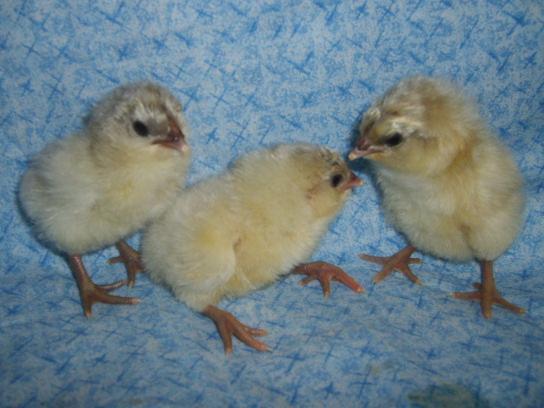To help clear up very common misunderstandings
If there arent organizations defining and tracking breeds, there can be no real understanding on what makes up certain breeds.
Hobby breeders, commercial hatcheries, many county fairs, etc. can have ideas of what chickens of particular breeds should be like. However, they dont have a unanimously agreed-on written description of them. So whos idea of a breed is the real one? What if one hatchery says Easter Eggers have muffs and beards, while another says they just lay colored eggs?
In the U.S., the American Poultry Association and American Bantam Association are the two large organizations (There are also many smaller breed clubs) that coordinate reaching agreements on breed characteristics. At any point in time, not all breeds nor varieties within each breed have had enough people focus on establishing specific and consistent traits that warrant that breed or variety being added to the official APA and APA records. When a number of people have coordinated and concentrated their breeding efforts enough to establish strong genetics for a distinctive new breed or variety, they can apply as a group to have their new breed or variety added to the recognized list. The description of currently recognized breeds and varieties and their agreed-upon traits is published in the current APA American Standard of Perfection and ABA Bantam Standard books.
---------------------------------------------------------------------------------------------------------------
For definition by the APA and ABA (Again--without a coordinating organization, people would just have various opinions which would not reliably match with others):
A chicken is classified as a certain breed SOLELY BASED ON CHARACTERISTICS (along with the likelihood of its genetics being able to pretty reliably continue to pass on those same characteristics). If you have a chicken that has all of that breed's required characteristics, then it is officially considered to be that breed of chicken.
Unlike dogs or horses, breed classification of a chicken is NOT BASED ON PARENTAGE (though parentage of course has a lot of effect on offspring's characteristics).
---------------------------------------------------------------------------------------------------------------
Perhaps a couple reasons for this:
--A lotta chickens pass through this world.
* Many are hard to identify and track as individuals.
* Many chickens are housed together. Trying to be sure who came from which breeding can be hardespecially since hens can lay eggs fertilized by a certain rooster weeks after they were last exposed to that rooster.
* People own too many chickens at a time to be able to maintain pedigrees on them.
* MANY chickens are sold to people who do not care about their chickens being an official breed, because they never show their chickens. They aren't willing to pay more, so it would be pointless to track pure-pedigree chickens because all that difficult record-keeping would yield little financial benefit.
* MANY chickens end up butchered. That would also waste a lot of record-keeping.
*** Chickens have shorter lifespans and FAR more potential offspring than horses or dogs. It is more practical to maintain a pedigree on breeding animals that are going to live 20 years than on ones that are likely to live only one. You'd have 20 generations of chicken pedigrees (That's a lotta papers considering the multitude of offspring possible) versus maybe 2 or 3 generations with the horse for a total of 2 or 3 pedigrees.
--If a breeder wants to improve their line of a breed of chickens, it is beneficial for them to have the freedom to refine their stock by crossing in a chicken from another breed that has really good genetics for strengthening a desired trait in the main breed, while not causing that breeding line to become permanently disqualified.
------------------------------------------------------------------------------------------------------------------
As consequences:
--A chicken can be categorized as a certain breed if it has all of the required breed characteristics, even if one or both of its parents do not have all of the characteristics (and therefore are not classified as that breed).
--Two chickens that have all the physical characteristics of a certain breed can have genetics that make possible having some chicks that do not have all the required traits (and are therefore not classified as that breed).
------------------------------------------------------------------------------------------------------------------
Does that clear things up a little? (If anyone has any more related info to add, please do.)
Im also going to post this as the start of a new thread so more people can potentially get helpful information.








